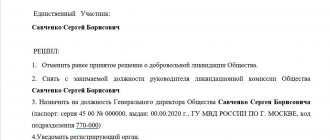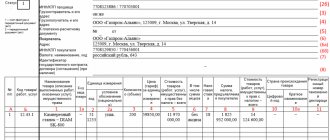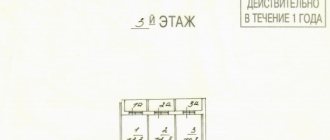Improving the appearance of a vehicle is widespread among car enthusiasts. Tinting is one of the ways to give a car a presentable appearance and status.
The film on glass also performs practical functions. In the summer, fuel savings occur due to the shorter period of operation of the air conditioning system, the light from oncoming headlights does not dazzle so much, and accidents on the roads are prevented.
Drivers believe that due to poor visibility of the interior, they will protect the car from thieves, swindlers and simply indiscreet glances. Undoubtedly, such vehicles have advantages, but you must remember that you can get an order to remove tinting from a road safety inspector. To prevent this from happening, when choosing and installing tinting, you must comply with the technical regulations of the Customs Union, which came into force in January 2015.
Requirements for tinting
The Code of Administrative Offenses, effective in 2021, namely Article 12.5, Part 3.1, informs that the light transmission of glass must meet technical requirements, otherwise a fine will be imposed.
GOST 32565–2013, dated 2015, allows the use of polymer film on glass and the fact that it serves as additional safety. It can be installed independently if the light transmission of the windshield and front windows is at least 70 percent.
The standard for tinting the remaining windows is not determined, provided that the rear view mirrors are installed and working in the car. This also applies to the permitted 14-centimeter strip of the windshield located on top; its light transmission is not adjustable.
What are the penalties for expired licenses?
Rosstandart defined glass painted or with a polymer film as light-heat-protective. Mirror tinting is still prohibited.
How long does the tinting order last in 2021?
You can avoid penalties for tinted windows by knowing the intricacies of measuring light transmittance indicators. For measurements, a special device and certain environmental conditions are required. But inspectors know about these standards just as well as drivers. That's why they resort to cunning.
It lies in the fact that when drawing up a protocol without taking measurements, inspectors incriminate the violator under Article 12.5.3.1 of the Administrative Code, and not 12.5.1. The fines under these articles are the same, but the essence is different. Art. 12.5.3.1 involves driving a car with malfunctions or conditions that do not allow further operation of the vehicle.
This article does not indicate the presence of tint, but rather any object or covering that restricts the driver's view. But film does not belong to such items, since no official measurement was carried out and non-compliance with standards has not been proven. It is necessary to make a video recording of the preparation of the protocol, then it will not be difficult to appeal the fine.
The use of additional decor on the windows or body of a vehicle does not always have legal grounds. Excessive tinting, although it protects from the sun, negatively affects the overview of the situation on the road, preventing the driver from adequately assessing the situation. But it is impossible to completely ban tinting, because many automakers produce cars with initially tinted windows, which complies with traffic regulations.
LDPR deputies prepared and submitted to the Duma for consideration a bill to completely abolish the fine for having tint. It is too early to say whether this law will be adopted. In the meantime, there are current legal regulations and laws that must be followed. Otherwise, excessive toning will lead to unpleasant consequences such as a fine. And in case of systematic violation of traffic rules regarding tinting, the driver faces more serious penalties such as deprivation of rights, etc. Therefore, you should not look for a way to circumvent the law; it is easier not to break it at all.
The rules for tinting are currently regulated by a document called “Basic provisions for the approval of vehicles for operation.” If you open its application, then in paragraph 7.3 you can see the full list of faults, as well as the conditions under which the operation of the car becomes impossible. For example, installing additional items or coverings that would obstruct the driver's view.
Specialists working at the Ministry of Transport reviewed the existing provisions and made adjustments. At the moment, GOST 5727, which was published back in the USSR, in 1988, is taken as a basis. But it is planned that at the beginning of 2021 a new GOST number 33997, introduced in 2021, will come into force. This is what the traffic rules will refer to.
When gluing protective film or placing screens on car windows, you will have to take into account the provisions of GOST, which require the following changes.
If we talk about the light transmittance of glass, then the current GOST standard for wind glass sets an indicator of at least 75%. For the rest - at least 70%.
The new version of the document deals with the windshield, for which the indicator is set at 70%. If there are side mirrors, then for the remaining glasses the light transmittance indicator will no longer be adjusted in any way.
There will definitely not be a complete ban on tinting car windows.
If the tinting is not done in accordance with GOST, the traffic police inspector has the right to issue a fine. The penalty is imposed on the basis of the Administrative Code, Art. 12.5. You will have to pay 500 rubles to the treasury. But in the first 10 days you can save money with a 50% discount.
The driver can agree to eliminate the obstacle on the spot. In this case, the traffic police inspector may limit himself to issuing a warning. In cases where the film cannot be removed on site, the violator will be issued a fine.
Of course, there are car owners who not only ignore the established regulations, but are also in no hurry to pay the fine. In this case, upon re-inspection and recording of the violation, a penalty in the form of payment of 1000 rubles will be established. fine For ignoring demands made by a police officer, a citizen may also be subject to arrest for up to 15 days. But you need to understand that a repeated fine or arrest of the violator is possible only through the court.
Practice shows that a driver who is brought to a hearing for the first time due to tinting will, in most cases, be fined. But if he has other fines that remain unpaid at the time of the court hearing, and also if he often violates traffic rules, the likelihood of arrest increases significantly.
Most often, traffic police inspectors check tinting during the summer months. It is during this season that the number of car owners who cover their windows with protective film increases. To avoid troubles, it is better to have glass tinted at a service station by craftsmen who comply with the provisions of GOST when working.
When gluing it yourself, you need to remember that on used cars, windshields and side windows transmit not 100%, but 90% of the sun's rays. To avoid getting a fine, you will need to use a film that darkens the interior by no more than 20%. But there will be no strong effect, so the procedure of gluing the windshield will not make sense.
Until recently, a fine of 500 rubles was imposed for tinting that did not meet state standards. When it came to a repeated violation, the fine increased to 1000 rubles. After the introduction of new requirements for the placement of tinting film, the amount of the monetary penalty was not revised. A year later, State Duma deputies proposed an initiative to tighten penalties for violating the requirements of regulatory documents.
Not everyone knows what requirements for tinting in 2021 apply to drivers. In order not to become a victim of abuse of power by the traffic police officer, it is worth carefully studying what the tinting should be on the car and on each of the windows. According to the current regulations, the standards are as follows:
| Light transmittance | Car glass type |
| from 70% | Windshield |
| from 70 | Front side windows (for armored ones - up to 60%) |
| not regulated | Rear window visibility. The use of mirror type film is prohibited. |
| up to 14 cm | Protective light strip on the windshield, in the upper part. |
Based on these standards, you can tint your car yourself and not worry that if you are stopped by traffic police, you will have to “excuse yourself” and pay a fine.
Special requirements apply to tinting front windows. In addition to the fact that they must have a sufficient level of light transmittance, there are several more nuances that must be observed:
- It is prohibited to cover the windshield with films of different colors and shades.
- You cannot cover the entire windshield.
- SP80 and 90 films are prohibited for use.
The current law describes other, smaller requirements for tinting, but it is also advisable to familiarize yourself with them.
After the order is drawn up and handed over to the violator, the driver has only two options - to prove that the requirement is unlawful or to get rid of the tint. The problem is that to confirm that you are right, you will need to order a special examination on the light transmittance of the tint. The cost of such a service is not the smallest. If no action is taken, then the probability of not receiving a fine is very, very high.
Regarding windshields, the requirements are quite clear and categorical. It's not so bad with the rear windows. Today there are no standards that do not allow completely tinting the windows in the car body.
The only problem that drivers should be aware of is that it is prohibited to dim the mirrors and headlights. When checking, you must take standard measurements.
Attention! The test is performed only during daylight hours and at normal humidity levels. If this rule has been violated, the results of the inspection can be easily challenged.
What is a prescription
A legal document drawn up in writing by a public official. The first part reflects illegal actions with reference to a legislative act. The second contains an order to stop the violation, excluding its causes and circumstances. If the traffic police requirement for tinting is not met, then an article of the Code of Administrative Offenses of the Russian Federation is applied, for which you will have to bear responsibility again.
A fine is provided for failure to comply with technical regulations before receiving a document in the amount of 300–500 rubles under Part 3.1 of Article 12.5.
What new law on tinting came into force on February 1, 2021
- The light transmittance of the windshield, front and rear side windows is at least 70%;
- If there are 2 rear-view mirrors, the light transmittance of the glass, which provides the driver with visibility from behind, is not standardized;
- Shading of the upper part of the windshield is permissible, with a width of no more than 14 cm.
Violation of the rules for operating a vehicle is grounds for detention.
What is a tint prescription? This is a written request from an official to eliminate identified violations within a certain period of time, issued to the driver after they have been committed.
An instruction also means a presentation, a decision, a decree. This is directly stated in paragraph 1. Article 19.5 of the Code of Administrative Offenses of the Russian Federation. Compliance with the order is mandatory. The fine for tinting during initial arrest is 500 rubles.
Article 4.2 contains a list of circumstances that mitigate administrative liability:
- Voluntary cessation of illegal actions;
- Assisting the employee in establishing the circumstances of the offense;
- Preventing the negative consequences of an offense by a driver;
- Voluntary execution of an order regarding a violation until a decision is made.
In most cases, it is easier to eliminate the violation on the spot or within the allotted time, thereby removing the order for tinting.
Repeated prosecution, taking into account the fact that the first requirement to eliminate the violation was not fulfilled (there is no certificate of work performed received at the service station), threatens the driver with a fine of 1,000 rubles.
If the first fine of 500 rubles has not been paid, employees can charge the owner of the car under Part 1. Article 20.25 of the Code of Administrative Offenses of the Russian Federation, which implies punishment up to arrest for 15 days.
How to avoid this? It is enough to pay a fine of 500 rubles (250 for the first 20 days) and remove the tint.
Legality of traffic police actions
Before issuing a monetary penalty, it is not enough to visually determine that the car does not look in accordance with the state standard. An employee of the State Traffic Inspectorate must check the light transmission with a special diagnostic tool under appropriate conditions.
If the driver sees any violations in the measurements, he may request the drawing up of a protocol in which he must indicate why the car owner disagrees with the results of the inspector’s actions. This document must be certified by two individuals as witnesses.
Fine for driving without compulsory motor liability insurance – is it possible to avoid or challenge it in court?
It is advisable to record everything that happens with a recorder or other photo and video devices. If you appeal the fine in court, the filming materials will be useful.
The traffic police officer has the authority to serve an order to stop the violation after drawing up a protocol and issuing a decision to determine the penalty for non-compliance with the technical conditions of operating the car.
The possibility of this document is enshrined in Article 13 of the Law “On the Police,” which states that an official may demand that a citizen stop illegal actions.
The order is issued not only to the owner, but also to the person driving a particular vehicle. If this citizen is stopped a second time, but while driving a different car, then it is legal to take action against him as for the primary violation.
If the car owner is stopped outside a stationary post, or has received an invitation to proceed to it, then the driver has the right to refuse. Administrative detention is permissible only for repeated violations.
It is not advisable to appeal the requirement, since this is not a decision on punishment, but a document issued to eliminate violations.
In court proceedings, you can prove your case if you are prompted to act illegally, get rid of the polymer tinting film at the stop.
Fine for lack of technical inspection - if the car is under three years old, there is no reason to worry?
Content:
Why do they issue a prescription/demand for tinting and what is the actual penalty for tinting?
What to do when a traffic police officer is about to issue an order/demand for tinting or hands it to you right now
Where to challenge the received order/demand for tinting. What to do with the requirement itself, and what will be easy to ignore?
This article is not a provocation of an illegal violation! There is a punishment for any violation, so if you deliberately commit a violation, then you should not be surprised that you will be punished for it. However, there are specific punishments for specific violations, and there are someone’s guesses and outright lawlessness. The punishment should be proportionate to the violation; now a drunk driver caught for the first time (judging by the consequences) can be punished more leniently than a person who drives a car with tinting. And it is precisely in order to clearly know where the limit of punishment is according to the law, and where the improvisation of individual officials is, and this article was written.
Validity period of the order
The period for fulfilling the requirements is not reflected in any legislative act, just as there are no instructions for filling out or a sample.
Typically, a State Traffic Inspectorate employee gives 10 days to eliminate violations, which is reflected in writing in the text of the document. Sometimes the period is not specified at all, then the order becomes unlimited. Under Article 19.3, the driver will be punished even after a few years, since this requirement is entered into the traffic police database and is excluded only after it is fulfilled.
Actions of the vehicle owner
There are several options, the most obvious is to bring the glass tinting to comply with state standards or simply remove the polymer film. You can stop using the car or sell it.
If the car owner does not intend to go to court regarding the illegality of determining the penalty in the form of a fine, then it is better not to delay, but to make payment within 20 days after the decision is made. In this case, the amount will decrease by 2 times, this provision is enshrined in Article 32.2, Part 1,3.
It is worth appealing a fine within 10 days only if there are convincing facts of illegality of the actions of the traffic police inspector (incorrect measurement of the light transmission of glass, documentation errors).
Otherwise, the punishment will remain in effect. If the judge nevertheless cancels the monetary penalty, then the order will automatically cease to be a legally valid document.
Fine for dirty and unreadable license plates – what to do in bad weather?
Is it possible to avoid punishment?
The driver can challenge the imposed sanctions in the following cases:
- if the procedure for checking the light transmission of glass was not carried out according to the rules;
- if the inspector's conclusions do not correspond to reality;
- if the fine was issued “by eye”, without using the appropriate equipment.
You can challenge the inspector's decision by filing an appeal with higher authorities, a prosecutor, or in court. The law allocates 10 days for this. Violations in the protocol will help the motorist prove his case.
How to check toning
Measurements to determine the light transmission of glass covered with tinting film are carried out in compliance with legal requirements. The procedure takes place at a stationary traffic police post by a specially trained employee using a taumer.
A device with a permissible error of 2% must meet the following conditions:
- be certified;
- have a certificate of annual verification, seal;
- contain a sticker on the body with the date of the last inspection;
- suitable for measuring glass of a certain thickness.
The exact percentage of light transmittance by tinting will be shown by the taumer if it is used at a temperature of 20 °C with an error of no more than 5 °C, air humidity 60% plus or minus 20%, pressure 86–106 kPa. An employee of the State Traffic Inspectorate must have measuring instruments for these parameters.
The device will work under other conditions, for example, in cold or rainy weather, but the readings will be distorted, which will give the driver the opportunity to appeal the inspector’s actions.
What fines are provided for speeding? Is it possible to lose your license?
Since penetrating light rays are measured, not absorbed ones, the results are not affected by the time of day. For glasses larger than 7.5 mm, the “Blik+” and “Tonic” models are used. If the thickness is less, you can use “Light” and “Highlight”. Supply voltage is 12 volts with a permissible deviation of 0.6. The person using the device is not required to provide the driver with a certificate of verification; a plate with the date is sufficient.
In addition to traffic police officers, traffic police specialists who determine the condition of the vehicle during a technical inspection are allowed to take measurements.
Procedure:
- determine air temperature, humidity, pressure;
- prepare the glass, clean it, wipe it dry;
- take measurements with the device;
- present the obtained indicators to the driver.
When a tint film that complies with the technical regulations transmits light, a report is drawn up; if the percentage of penetrating light rays is less than the norm, then a protocol is drawn up indicating the evidence obtained, and then a fine is issued and a requirement to stop the offense.
Issuing an order for a violation detected visually is illegal. The Supreme Court of the Russian Federation put an end to this issue back in 2011, when it overturned the decisions of lower courts. The check must be carried out exclusively by measuring means.
Instruments for measuring the light transmittance of glass
How to properly apply tint yourself
If a traffic police inspector decides to measure the light transmittance of your glass, you should ask him for a valid certificate for the device and see if the device itself is sealed. If the inspector refuses to show the certificate or if it is expired, you should move on calmly, since the measurement is simply impossible.
Often, measurements are made with a portable Blik device. It connects to the car's cigarette lighter and works correctly at a voltage of 12 volts (+- 0.6 volts). Tell the inspector that your battery is very weak and cannot produce the specified power, the inspector will have to drive his car and connect the device to it. The Blik device on its screen shows the amount of light transmitted, for example, if you see the number 75 on its screen, it means the light transmittance of your glass is 75%, which means everything complies with the technical regulations. It should also be remembered that this device can only be used at temperatures from -10 to +40 degrees Celsius. Measurements should be taken at three different points on the glass; the arithmetic average will be an indicator of light transmittance.
Important!
Be careful at all stages of measurement. If the inspector made a mistake somewhere, he should not point it out. After drawing up the protocol, simply indicate all the employee’s mistakes in the protocol itself, in this case it will be much easier to defend your rights.






